Antimatter and Why It Matters to Me
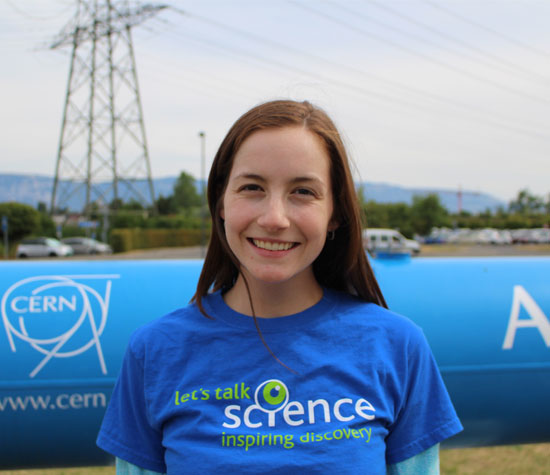
Melissa Valdez at CERN (Photo by Travis Valdez, courtesy of Melissa Valdez)

Melissa Valdez at CERN (Photo by Travis Valdez, courtesy of Melissa Valdez)
How does this align with my curriculum?
| Grade | Course | Topic |
|---|
Melissa Valdez talks about her exciting work on antimatter at CERN when she was a graduate student at York University.
If you’re reading this outside of school, there’s a good chance you really love science. When I was in high school, I spent my summers reading science magazines. I remember cutting out a big photo of the Large Hadron Collider at CERN when it first opened in 2010.
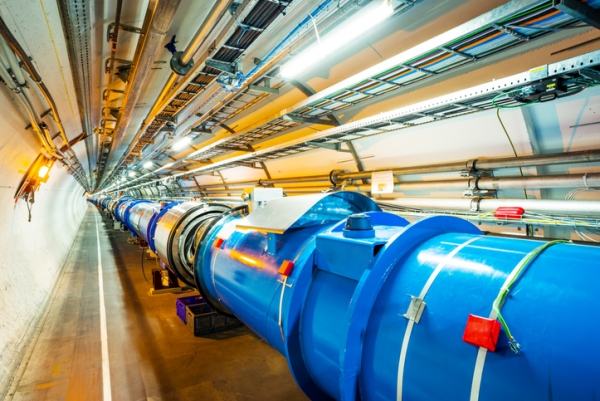
I was inspired by the physicists working on cutting-edge science experiments. I pinned their stories to my corkboard. Five years later, I had finished an undergraduate degree in physics and I was doing graduate research at CERN myself!
The project I worked on is called ALPHA. That stands for Antihydrogen Laser PHysics Apparatus. That’s also the name of our team’s first experiment. Our goal is to create and trapantihydrogen, then use lasers to study it.
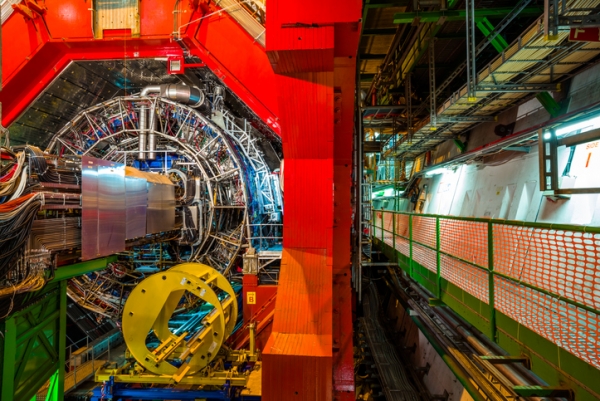
Lasers make light that is completely monochromatic. That means it is made of only one wavelength or colour of light. Physicists use the light from lasers to ‘excite’ atoms. They shine light with the exact amount of energy electrons need to jump between energy levels. This way they can observe the jump as it happens.
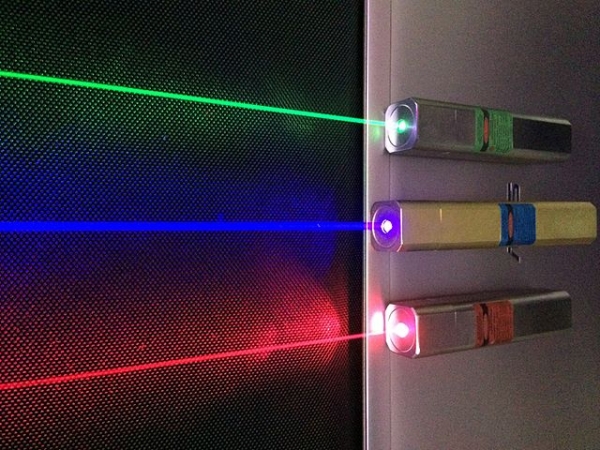
So why do we use hydrogen? Hydrogen is the simplest atom. It has only one proton and one electron. Because it’s so simple, hydrogen has been studied a lot. Its physical properties, like mass, charge, spin, and energy levels, are all well known. Researchers know a lot less about antihydrogen. Antihydrogen is made of one antiproton (a negatively charged proton) and one positron (a positively charged electron).
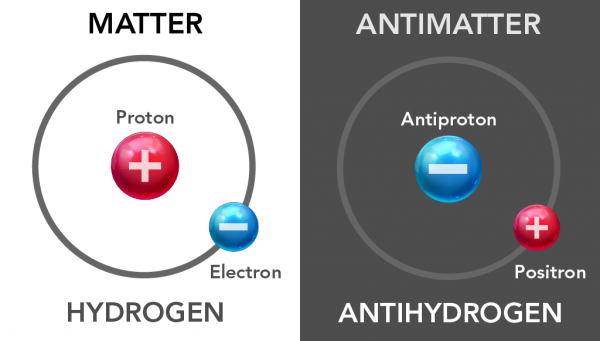
The Standard Model of physics says that particles and antiparticles share all of the same properties, except charge. Physicists believe that antiparticle charges have the same value, but the opposite sign.
As we study the physical properties of antihydrogen, we’re interested to see if we will measure values that are different than they are for regular hydrogen. That would be a clear sign that there is “new physics” that isn’t explained by the Standard Model.
Did you know?
We already use our understanding of antimatter in medical scanning. PET scanners can tell how well organs are functioning by looking for evidence of the creation of positrons.
What we are really trying to understand is why we observe more matter than antimatter in our universe. Physicists theorize that at the time of the Big Bang, equal amounts of matter and antimatter should have been produced. But something tipped the balance in favour of regular matter.
How do we know this? When a particle meets its antiparticle counterpart, their masses turn completely into energy and they vanish. This process is called annihilation. It is governed by the famous equation E = mc2.
But if equal amounts of matter and antimatter were really created after the Big Bang, everything would have annihilated soon after it appeared. Our universe would just be leftover energy.
We know that is not the case, because here we are! So our team is trying to find out what happened to the missing antimatter, or why more matter was created than antimatter in the first place. This is called the antimatter asymmetry problem.
Did you know?
Antimatter is so hard to make that it cannot be used as a weapon. If you put together all the antimatter we have made in 30 years of experiments, the explosion would not be more dangerous than lighting a match.
Our experimental apparatus is called ALPHA-2. It is located in the Antiproton Decelerator Hall at CERN. That building was recently nicknamed “The Antimatter Factory”. There are several other antimatter experiments in the same building. AEgIS, ASACUSA and ATRAP all share the goal of understanding more about antimatter.
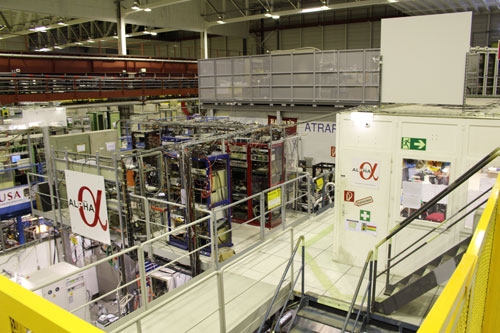
Are you interested in antimatter too? Maybe in five years you’ll be working on one of the projects in The Antimatter Factory, just like me!
Starting Points
- Do you enjoy reading about cutting-edge science? Why or why not?
- Would you have an interest in doing physics research like Melissa Valdez did?
- Have you or has anyone in your family ever had a PET scan? What was the purpose of the scan?
- Searching for antimatter is a costly type of research. What is the value of conducting this type of research?
- Define matter? What is antimatter?
- What is The Standard Model of physics?
- What is the goal of the ALPHA project? Why is hydrogen the element of choice in this study?
- Which branch of theoretical physics is the focus of this article? What are the other branches of theoretical physics? Why is it called “theoretical” physics? (Note: This question may require additional research)
- How is the Large Hadron Collider and CERN active on social media? What is the value of sharing information about the activities taking place at this centre of advanced science?
- This article supports teaching and learning of physics related to modern physics and particle physics. Concepts introduced include antihydrogen, lasers, wavelength, energy levels, hydrogen, spin, antiproton, positron, The Standard Model, Big Bang, antimatter, annihilation and E = mc2.
- To consolidate learning after reading this article, teachers could have students create a Concept Definition Web for the concept of antimatter. Ready-to-use reproducibles using this strategy for this article are available in [Google doc] and [PDF] formats.
- To explore this topic further teachers could have students use an Issues & Stakeholders learning strategy to consider the perspectives of a variety of stakeholders (e.g., physicists, governments, general science community, public, etc.) with respect to the value of antimatter research. Ready-to-use reproducibles using the Issues & Stakeholders strategy with this article are available in [Google doc] and [PDF] formats.
Connecting and Relating
- Do you enjoy reading about cutting-edge science? Why or why not?
- Would you have an interest in doing physics research like Melissa Valdez did?
- Have you or has anyone in your family ever had a PET scan? What was the purpose of the scan?
Relating Science and Techgnology to Society and the Environment
- Searching for antimatter is a costly type of research. What is the value of conducting this type of research?
Exploring Concepts
- Define matter? What is antimatter?
- What is The Standard Model of physics?
- What is the goal of the ALPHA project? Why is hydrogen the element of choice in this study?
Nature of Science/Nature of Technology
- Which branch of theoretical physics is the focus of this article? What are the other branches of theoretical physics? Why is it called “theoretical” physics? (Note: This question may require additional research)
Media Literacy
- How is the Large Hadron Collider and CERN active on social media? What is the value of sharing information about the activities taking place at this centre of advanced science?
Teaching Suggestions
- This article supports teaching and learning of physics related to modern physics and particle physics. Concepts introduced include antihydrogen, lasers, wavelength, energy levels, hydrogen, spin, antiproton, positron, The Standard Model, Big Bang, antimatter, annihilation and E = mc2.
- To consolidate learning after reading this article, teachers could have students create a Concept Definition Web for the concept of antimatter. Ready-to-use reproducibles using this strategy for this article are available in [Google doc] and [PDF] formats.
- To explore this topic further teachers could have students use an Issues & Stakeholders learning strategy to consider the perspectives of a variety of stakeholders (e.g., physicists, governments, general science community, public, etc.) with respect to the value of antimatter research. Ready-to-use reproducibles using the Issues & Stakeholders strategy with this article are available in [Google doc] and [PDF] formats.
Learn more
Physicists Take Their Closest Look Yet at an Antimatter Atom (2020)
This article, from Wired, describes the latest experiment run in the lab where Melissa worked.
Why This Stuff Costs $2700 Trillion Per Gram - Antimatter at CERN (2019)
In this video (11:29 min.) PhysicsGirl visits CERN and explains why studying antimatter is so important.
The Five Greatest Mysteries of Antimatter (2009)
New Scientist magazine has several articles based on CERN’s experiments including “does antimatter fall up?” and “what about antimatter bombs?”
References
Cartlidge, E. (2020, February 20). CERN physicists close in on antimatter–matter asymmetry. Physics World.
European Organization for Nuclear Research . (n.d.). Antimatter at CERN. https://home.cern/
European Organization for Nuclear Research. (n.d.). The Standard Model. https://home.cern/
Melissa Valdez
Melissa Valdez volunteered for Let’s Talk Science since 2013 and became Assistant Regional Coordinator for Let’s Talk Science in Ontario. She now works for IBM on artificial intelligence but still gives talks about her experiences as a graduate student at CERN, as an outreach scientist, and as a woman in physics.